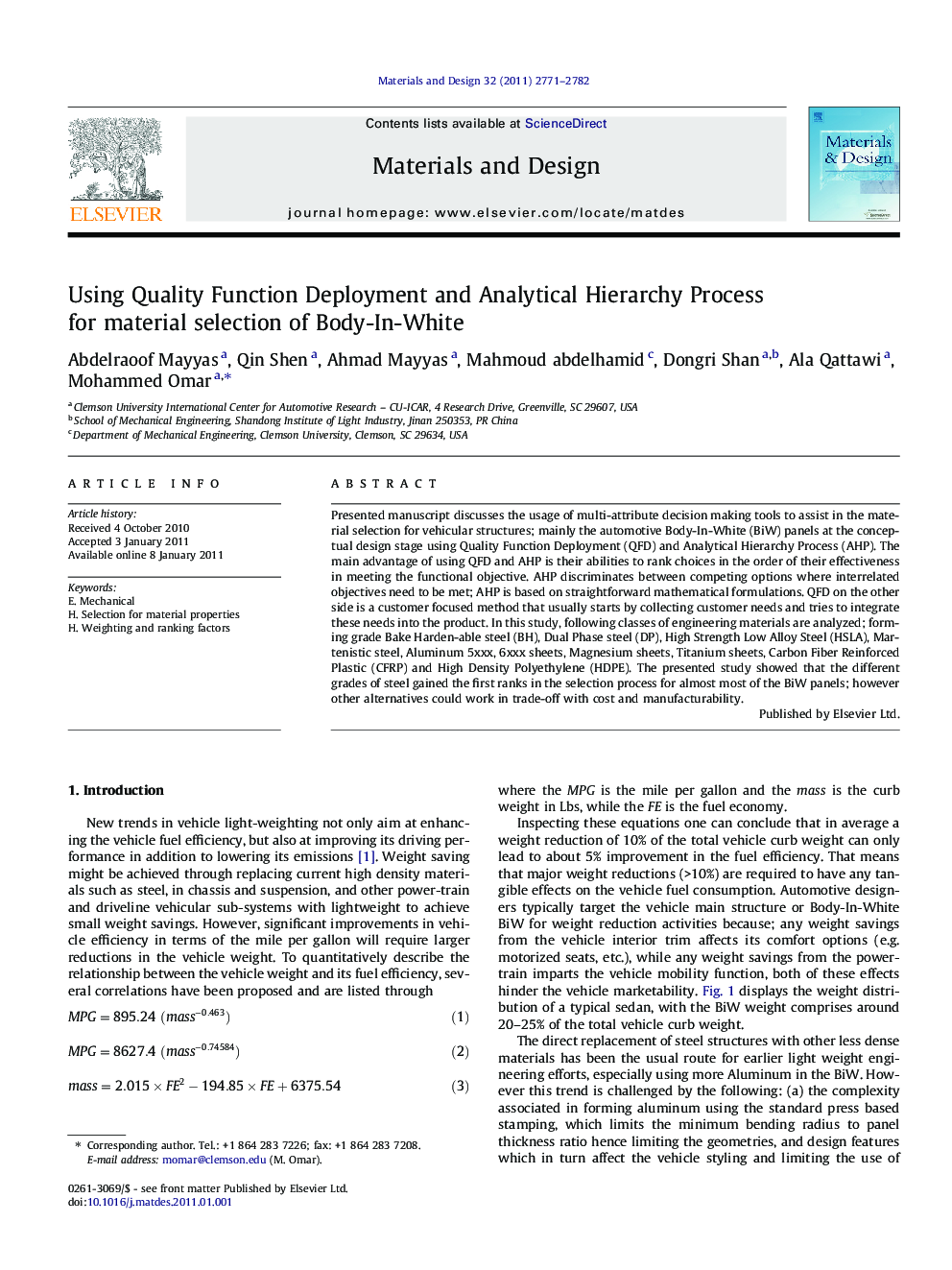| Article ID | Journal | Published Year | Pages | File Type |
|---|---|---|---|---|
| 831285 | Materials & Design (1980-2015) | 2011 | 12 Pages |
Presented manuscript discusses the usage of multi-attribute decision making tools to assist in the material selection for vehicular structures; mainly the automotive Body-In-White (BiW) panels at the conceptual design stage using Quality Function Deployment (QFD) and Analytical Hierarchy Process (AHP). The main advantage of using QFD and AHP is their abilities to rank choices in the order of their effectiveness in meeting the functional objective. AHP discriminates between competing options where interrelated objectives need to be met; AHP is based on straightforward mathematical formulations. QFD on the other side is a customer focused method that usually starts by collecting customer needs and tries to integrate these needs into the product. In this study, following classes of engineering materials are analyzed; forming grade Bake Harden-able steel (BH), Dual Phase steel (DP), High Strength Low Alloy Steel (HSLA), Martenistic steel, Aluminum 5xxx, 6xxx sheets, Magnesium sheets, Titanium sheets, Carbon Fiber Reinforced Plastic (CFRP) and High Density Polyethylene (HDPE). The presented study showed that the different grades of steel gained the first ranks in the selection process for almost most of the BiW panels; however other alternatives could work in trade-off with cost and manufacturability.
Research highlights► Decision making tools for selecting materials for automotive panels. ► Performance criteria and manufacturability aspects are quantified. ► QFD and AHP analyze each body panel in the BiW separately and collectively. ► BiW overall BiW weight, performance, and compatibility are assessed. ► QFD and AHP rank several materials for BiW including; BH, DP, HSLA.
